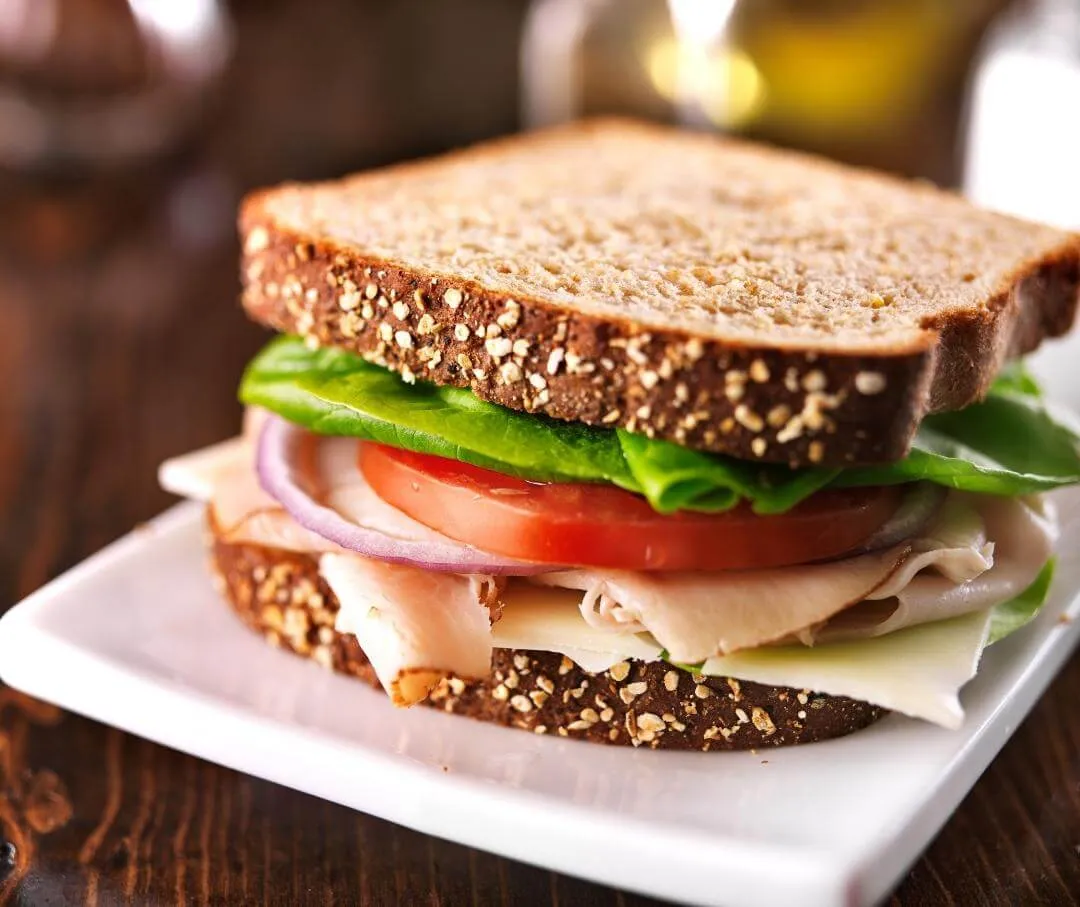While pork is often seen as a not-so-healthy red meat, there's more to it than meets the eye. Sometimes called the other white meat, processed meats like bacon and sausage may contribute to much of the meat consumption in the U.S., but they aren’t the only pork options. Lean cuts like pork tenderloin and pork chops can be part of a healthy diet.
In this article, we’ll explore how pork can support your metabolic health, including nutrition facts, health benefits, and risks to consider, as well as how to prepare different cuts if you choose to add pork to your daily dishes.
{{mid-cta}}
Why Is Pork a Good Choice for Metabolic Health?

In the 1980s the National Pork Board launched an advertising campaign calling pork “The Other White Meat.” Their goal was to have consumers reconsider pork as a healthy, low-fat protein choice.1
The campaign got the attention of consumers and pork producers alike, who have gone on to raise pork that is lower in saturated fat and total fat than it was 20 years ago.2
While often considered high in fat, lean pork is an excellent source of high-quality protein and B vitamins, including thiamine, riboflavin, niacin, and vitamin B6. It is lower in iron, zinc, and vitamin B12 than beef but also lower in total fat, saturated fat, and cholesterol, which can support a healthy weight and metabolism.3, 4, 5
When compared to other types of unprocessed meat, studies have shown that fresh pork is just as effective at promoting metabolic health and reducing the risk of cardiovascular disease as other types of meat.6
Eating more pork may be helpful for weight loss. A study of 164 overweight adults found that those who increased the number of servings of pork weekly lost weight and reduced their waist circumference and % body fat compared to those who ate more chicken and beef.7
Other studies have looked at glucose and insulin response after consuming unprocessed pork products compared to other unprocessed proteins and found no difference in glucose or insulin response.8
More research is needed on the effects of processed pork products like bacon, sausage, and ham on insulin and blood glucose response, but lean, unprocessed pork can be a part of a metabolically healthy meal plan.
<p class="pro-tip"><strong>Learn more about our free </strong> <a href="/blog/low-glycemic-plan">7-day low-glycemic diet plan</a>.</p>
Nutrition Facts of Pork
The nutrition facts of pork depend on the cut. For example, Bacon will have different nutrients than pork chops. The following nutrition facts are for 3 ounces of roasted pork loin:9
- Total Calories: 163kcal
- Fat: 7.5g
- Carbohydrates: 0g
- Protein: 22.4g
- Fiber: 0g
- Sugar: 0g
Pork is also a good source of selenium, B vitamins, phosphorus, zinc, iron, and essential amino acids.
What Are the Potential Benefits of Pork?
Understanding the potential benefits of consuming pork can help you decide if it’s a good choice for your lifestyle:
- Rich in Protein: Pork is an excellent source of high-quality protein, which is essential for muscle mass growth, repair, and overall body function. High-protein foods also help keep blood sugar and appetite in check.
- Vitamins and Minerals: Pork contains essential vitamins and minerals such as B vitamins (like B12), zinc, iron, and selenium, which are vital for your health.
- Taste and Versatility: Besides its nutritional benefits, pork offers a delicious taste profile and versatility in cooking methods.
2 Potential Health Risks of Pork Consumption
While some are rare, exploring the potential health risks associated with pork consumption is also helpful in deciding where it can fit into your diet. Some people avoid pork for religious reasons, but there are other potential risks to consider:
- Increased Risk of Heart Disease: Consuming excessive amounts of pork, mainly processed varieties high in saturated fats, could increase the risk of heart disease.10
- Risk of Foodborne Illnesses: Undercooked pork poses a significant risk of foodborne illnesses such as trichinosis, caused by the Trichinella roundworm or tapeworm infections, from raw or undercooked pork.11 This is especially concerning for people with a compromised immune system. While very rare in the U.S., you can mitigate the risk of health problems by avoiding raw pork and cooking to an internal temp of at least 145 degrees.
Cuts of Pork and How to Prepare Them

Most grocery stores sell a variety of pork cuts. Here are the characteristics of each cut and tips for how best to prepare it.
Tenderloin
Pork tenderloin is the leanest and healthiest cut of pork available, comparable in fat content to a boneless chicken breast. It cooks quickly and absorbs the flavors of the spices and herbs it’s cooked with, making it a great substitute for traditional white meat (chicken).
Rub the tenderloin with a southwestern spice rub or marinate it with oil, vinegar, and Italian spices for a flavorful dinner. Sear it on all sides and then roast it in the oven for 20 minutes or place it on the grill. Cook to an internal temperature of 145°F.
Roast
A pork loin, also called a roast or pork sirloin, is one of the lean cuts of pork. You may see it labeled as a center-cut pork roast, ribeye roast, or top loin roast. It is also delicious, rubbed with herbs and spices, then roasted in the oven or grilled. Cook it to an internal temperature of 145°F. Once finished cooking, let the pork rest for a few minutes before cutting into it. This will help keep it juicy and flavorful!
Chops
Pork chops come from the pork loin and are either sold with the bone in or boneless. Chops with the bone left in, tend to be higher in fat because of the layer of fat between the meat and the bone. Pork chops are incredibly versatile and can be sauteed, grilled, baked, or even air-fried.
Pork Belly
This is the cut that bacon comes from. It is high in fat, rich in flavor, and is typically salted and cured. You may also see smoked pork belly on restaurant menus. The preparation method dictates how high it is in salt and fat. You’ll most often see pork belly on restaurant menus and know that while it is delicious, it is one of the highest-fat cuts of pork.
Pork Ribs
Excellent for a summer barbecue or slow-roasted on a cold winter day, pork ribs are just that—the ribs from the pork. They tend to be higher in fat than other cuts of pork. They are delicious with a spicy rub, but go easy on the barbecue sauce, which can add a lot of sugar.
Pork Shoulder
One of the fattiest cuts of pork, it is also known as a picnic roast, Boston butt, or pork butt. This cut is often used for pulled pork and is best slow-roasted or smoked.
How to Use Pork for Dinner

Pork can be an easy protein to include in your meals (along with plenty of high-fiber vegetables). Some cuts, like pork tenderloin or boneless pork chops, cook in under a half hour, making them an excellent option for busy nights.
Cooking temperatures for pork were recently updated. Most cuts should be cooked to an internal temperature of 145°F with a 3 - 10 minute “rest” before slicing or serving. The exception is ground pork, which should still be cooked to 160°F.
Pork is also easy to use in a variety of cuisines and with a variety of flavors. Try sliced pork loin with stir-fried veggies or roasted pork tenderloin stuffed with pesto and served with a hearty grain-like farro.
Pork chops can be broiled, air-fried, baked, or grilled. Top them with a barbeque seasoning rub or drizzle with a Dijon mustard vinaigrette like the sheet pan pork chop recipe below.
Pork and Brussels Sprouts With Pesto—an Easy Sheet Pan Dinner
Sheet-pan dinners are easy and make clean-up a breeze. If you are feeding more than two people, double the amounts and split the ingredients between two pans.
Ingredients:
- 2, 4 oz. boneless pork chops
- ¼ cup prepared pesto
- 6 small yellow potatoes, quartered
- 12 - 15 Brussels sprouts, cut in half
- 1 tbsp. Extra virgin olive oil
- ½ tsp. Kosher salt
- ½ tsp. Black pepper
Directions:
- Preheat the oven to 425°F. Line a sheet pan with foil or parchment paper.
- Place pork chops on the sheet pan at one end. Spread each pork chop with 1 tablespoon of pesto.
- Place potatoes in a small bowl and toss them with 2 tablespoons of pesto. Place the potatoes in the middle of the pan.
- Toss the brussels sprouts with 1 tablespoon of olive oil and place them on the other end of the sheet pan. Sprinkle them with salt and pepper.
- Place the sheet pan in the middle of the preheated oven and roast for about 20 minutes, until the pork is lightly browned and the potatoes are tender when pierced with a fork or knife.
Serves 2
Calories: 570, Total Fat: 29g, Saturated Fat: 5g, Cholesterol: 100mg, Sodium: 900mg, Carbohydrates: 41g, Fiber: 7g, Sugars: 5g, Protein: 43g, Vitamin D: 1mcg, Calcium: 145mg, Iron: 5mg, Potassium: 1190mg
<p class="pro-tip"><strong>Learn More: </strong><a href=chicken-sheet-pan-dinners>Try These Healthy Chicken Sheet Pan Dinner Recipes</a>.</p>
Topics discussed in this article:
References
- Baer, A. A., Miller, M. J., & Dilger, A. C. (2013). Pathogens of interest to the pork industry: a review of research on interventions to assure food safety. Comprehensive Reviews in Food Science and Food Safety, 12(2), 183-217.
- The National Pork Board. Pork Checkoff Program. The Other White Meat. Accessed August 29, 2022. https://porkcheckoff.org/pork-branding/pork-brands/the-other-white-meat-brand/
- United States Department of Agriculture, Nutrient Dataset for Fresh Pork, Release 1.1, September 2007. Accessed, August 29, 2022. https://www.ars.usda.gov/ARSUserFiles/80400525/Data/Pork/Pork1-1.pdf
- USDA, Food Data Central. Pork, Fresh, Loin 4/1/2019. Accessed, August 29, 2022. https://fdc.nal.usda.gov/fdc-app.html#/food-details/168250/nutrients
- Murphy, M. M., Spungen, J. H., Bi, X., & Barraj, L. M. (2011). Fresh and fresh lean pork are substantial sources of key nutrients when these products are consumed by adults in the United States. Nutrition research (New York, N.Y.), 31(10), 776–783. https://doi.org/10.1016
- USDA, Food Data Central Website. Beef, Tenderloin, Roast. 4/1/2019. Accessed August 29, 2022. https://fdc.nal.usda.gov/fdc-app.html#/food-details/168723/nutrients
- Micha, R., Wallace, S. K., & Mozaffarian, D. (2010). Red and processed meat consumption and risk of incident coronary heart disease, stroke, and diabetes mellitus: a systematic review and meta-analysis. Circulation, 121(21), 2271–2283. https://doi.org/10.1161/CIRCULATIONAHA.109.924977
- Murphy, K. J., Thomson, R. L., Coates, A. M., Buckley, J. D., & Howe, P. R. (2012). Effects of eating fresh lean pork on cardiometabolic health parameters. Nutrients, 4(7), 711–723. https://doi.org/10.3390/nu4070711
- Stettler, N., Murphy, M. M., Barraj, L. M., Smith, K. M., & Ahima, R. S. (2013). Systematic review of clinical studies related to pork intake and metabolic syndrome or its components. Diabetes, metabolic syndrome and obesity : targets and therapy, 6, 347–357. https://doi.org/10.2147/DMSO.S51440
- USDA, Food Data Central. Pork, Roasted, Loin 4/1/2019. Accessed, May 22, 2024. https://fdc.nal.usda.gov/fdc-app.html#/food-details/167842/nutrients
- Iqbal, R., Dehghan, M., Mente, A., Rangarajan, S., Wielgosz, A., Avezum, A., Seron, P., AlHabib, K. F., Lopez-Jaramillo, P., Swaminathan, S., Mohammadifard, N., Zatońska, K., Bo, H., Varma, R. P., Rahman, O., Yusufali, A., Lu, Y., Ismail, N., Rosengren, A., Imeryuz, N., … Yusuf, S. (2021). Associations of unprocessed and processed meat intake with mortality and cardiovascular disease in 21 countries [Prospective Urban Rural Epidemiology (PURE) Study]: a prospective cohort study. The American journal of clinical nutrition, 114(3), 1049–1058. https://doi.org/10.1093/ajcn/nqaa448



.webp)
.svg)




.webp)





.svg)
.svg)
.svg)
.svg)
.svg)
.svg)
.svg)
